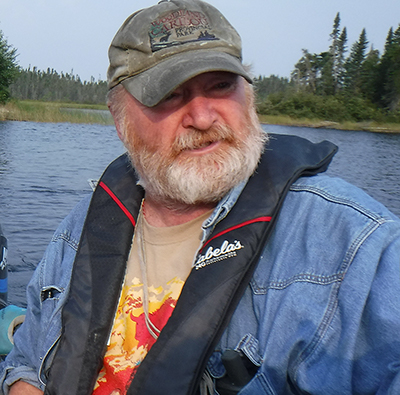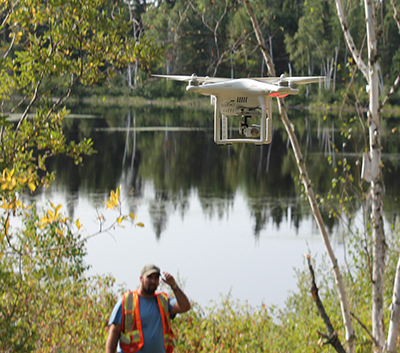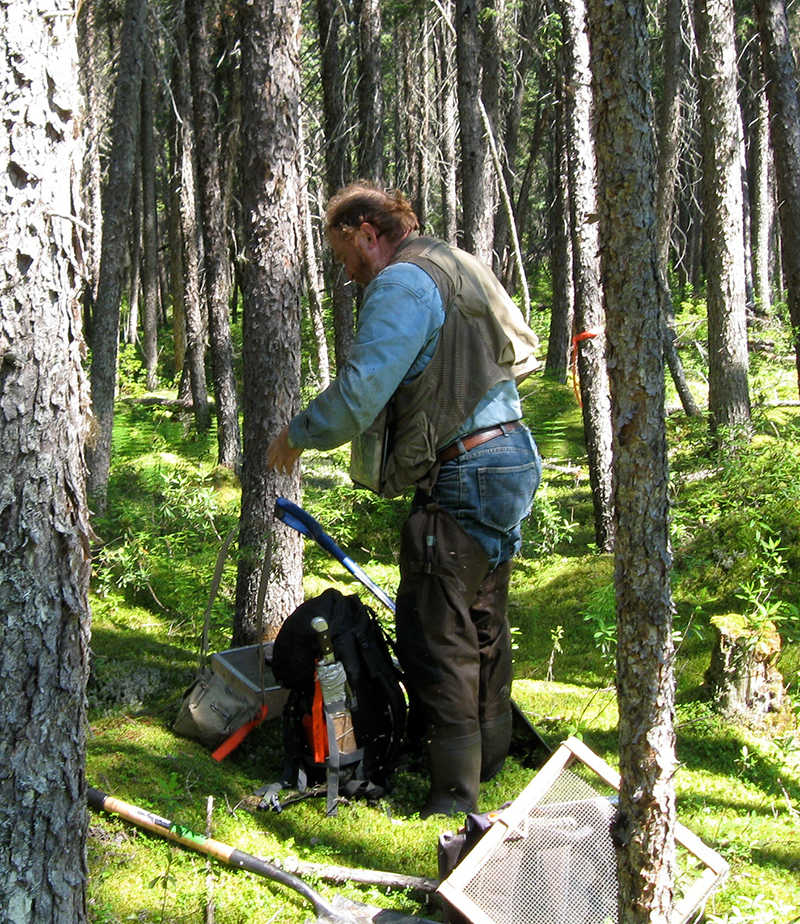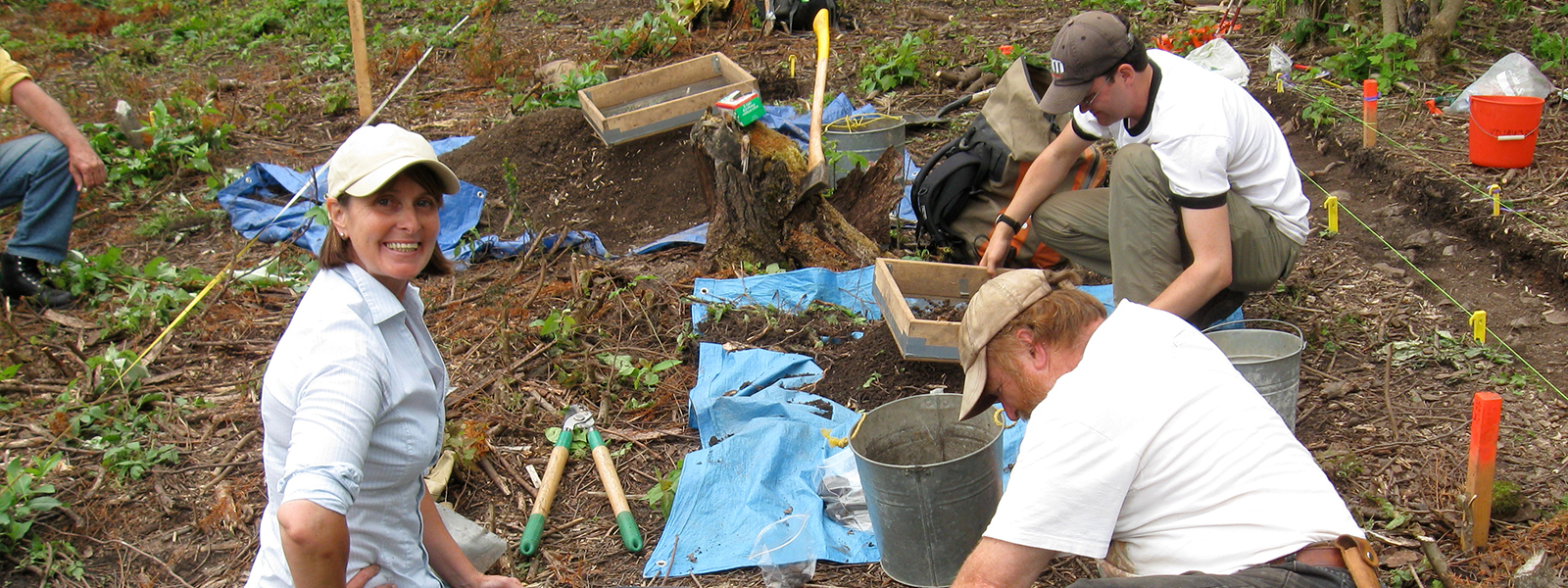Research in places like the remote Hudson Bay Lowlands has changed archaeologist Dr. Scott Hamilton’s understanding of Canada.
“The Lowlands are an area of water-saturated bogs, muskeg, sphagnum moss, and coniferous trees,” Dr. Hamilton says. “In the summer, it has an incredibly high density of insects that swarm and bite.”
He recalls an expedition there 12 years ago to conduct an archaeological assessment on behalf of the Constance Lake First Nation during planning of a road route to a possible phosphate mine.
"We would get dumped out of a helicopter early in the morning wearing hip waders and carrying all of our gear, water and food on our backs. There was surface water everywhere but you couldn’t drink it. If the helicopter couldn’t pick us up, we would be there overnight."
At first, it felt like hell on Earth.
But as the weeks went by, Dr. Hamilton became struck by the “absolute beauty” of this northern landscape that is part of traditional Cree and Ojibwe territory.
“It’s incredibly lush and green. Orchids bloom in the floating bog vegetation in the summer and there’s no ambient noise except for the birds and insects. Silence envelops you. I began to see why these homelands are so revered.”

Scott Hamilton doing boat survey at Slate Falls First Nation. Water transportation is still the most important means of warm season movement in the northern boreal forest, with archaeological sites often found along the shores of navigable streams and lakes.
Dr. Hamilton specializes in applied and academic research in fur trade archaeology, ethnohistory, and Aboriginal archaeology of Canada’s northern plains and boreal forest. He’s been a Lakehead professor since 1988 and he’s currently the Department of Anthropology Chair and a member of Lakehead’s Centre of Excellence for Sustainable Mining & Exploration.

His contributions to the discipline were recognized in November 2020 when he received a J.V. Wright Lifetime Achievement Award from the Ontario Archaeological Society.
Dr. Hamilton’s methods have evolved over time and include his adoption of Global Positioning Systems (GPS), Geographic Information Systems (GIS), near-surface geophysics, aerial and underwater drones, sonar, and 3D modelling to carry out his research.
Using a drone in 2018 to photo-document early 20th-century cabin foundations at Slate Falls, Ontario. This cabin foundation is in an area reported by Elder Sam Carpenter as a place where he lived as a child. After locating subtle earth ridges indicating the foundation, brush was cleared to aid documentation. This included drone-assisted photogrammetry to map the site. Archaeological team member Clarence Surette can be seen in the background.
“I’m a bit of a map nerd,” he says. “I like to reconstruct what sites looked like.”
Having the capacity to deploy non-invasive data recovery helps preserve historic sites. A recent example is new information he’s gathered about the Sourismouth forts – a series of fur trading posts constructed along Manitoba’s Assiniboine and Souris rivers – using aerial drones. These technologies are also useful for understanding how the landscape was used by pre-contact communal bison hunters.
“I’m an old archaeologist trying to keep up with new approaches,” he says, “but working with hotshot graduate students makes it a lot easier.”
His consulting career began in the early 1980s overseeing salvage operations for Ontario’s Ministry of Tourism, Culture and Sport using funding from the Ontario Ministry of Northern Development and Mines. This was sparked by the realization in the 1970s that Canada’s natural and cultural heritage was being jeopardized by a growing number of natural resource development projects. This resulted in requirements for environmental impact assessment conducted before projects were given the green light. Most of the archaeology now conducted in Canada involves the inventory and investigation of sites before industrial infrastructure can be built.
Dr. Hamilton’s expertise as a consultant has been sought on many of these ventures, such as the Ring of Fire mineral exploration project in Northern Ontario. He is helping document First Nations’ culture and history in the region by interviewing Elders and identifying sensitive places requiring protection. He also reviews other archaeologists’ work on these types of projects.
“Some of my most important applied research is in the role of ‘cultural translator,’ since two sides in a dispute often have difficulty comprehending the viewpoints of the other side.
“It means moving beyond the economic valuation of Indigenous relationships with the land and embracing a cultural-spiritual perspective. Supreme Court decisions mandating the Crown’s duty to consult with Indigenous communities, as well as Canada’s Truth and Reconciliation process, have strengthened this trend.”

Scott Hamilton doing remote shovel test survey in Hudson Bay Lowlands in 2008. Guided by GPS tracks, these walking transects were conducted along a proposed road. Surface inspection and sub-surface testing sought to determine whether archaeological deposits intersect the proposed road route. This reconnaissance is the first step in the impact assessment process.
At the moment, Dr. Hamilton is engaged in an ambitious undertaking that is using his training in new ways. He is the archaeology team co-leader of the Six Seasons of the Asiniskaw Ithiniwak Project, funded by a $2.5 million Social Sciences and Humanities Research Council (SSHRC) partnership grant with Rocky Cree communities in northern Manitoba and the University of Winnipeg in Manitoba.
“We’re working with a Cree storyteller, William Dumas, who is writing a series of picture books for Rocky Cree children, although I suspect it will have a much broader reach,” Dr. Hamilton says.
The aim is to develop a school curriculum for Rocky Cree children that encourages language retention and helps younger generations learn about their ancestors’ way of life.
These historical stories will feature children working with their elders and learning about their role in society. The first book is a coming-of-age story about an adolescent girl in the 1600s trying to decide if she’d like to become a midwife when she grows up. While travelling with her aunt and uncle by canoe to a spring gathering, a thunderstorm separates them from the rest of the group. When her pregnant aunt goes into labour, the girl must help her give birth.
Dr. Hamilton is on the team providing information about Rocky Cree history and technology that appear in sidebars within the stories. The project is also developing app versions of the stories so that children can listen to the stories in Rocky Cree or English.
Research like the Six Seasons of the Asiniskaw Ithiniwak Project allows Dr. Hamilton to do ground-breaking work that has a real impact.
“The kids are transfixed by the stories,” he says, “and for me, it’s really satisfying to participate in something that will be read by non-academic audiences.”
Learn about the Six Seasons of the Asiniskaw Ithiniwak Project


